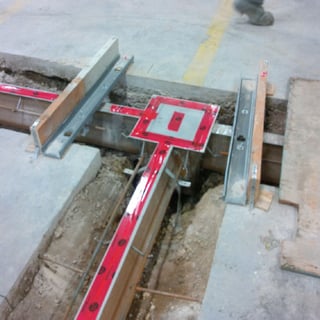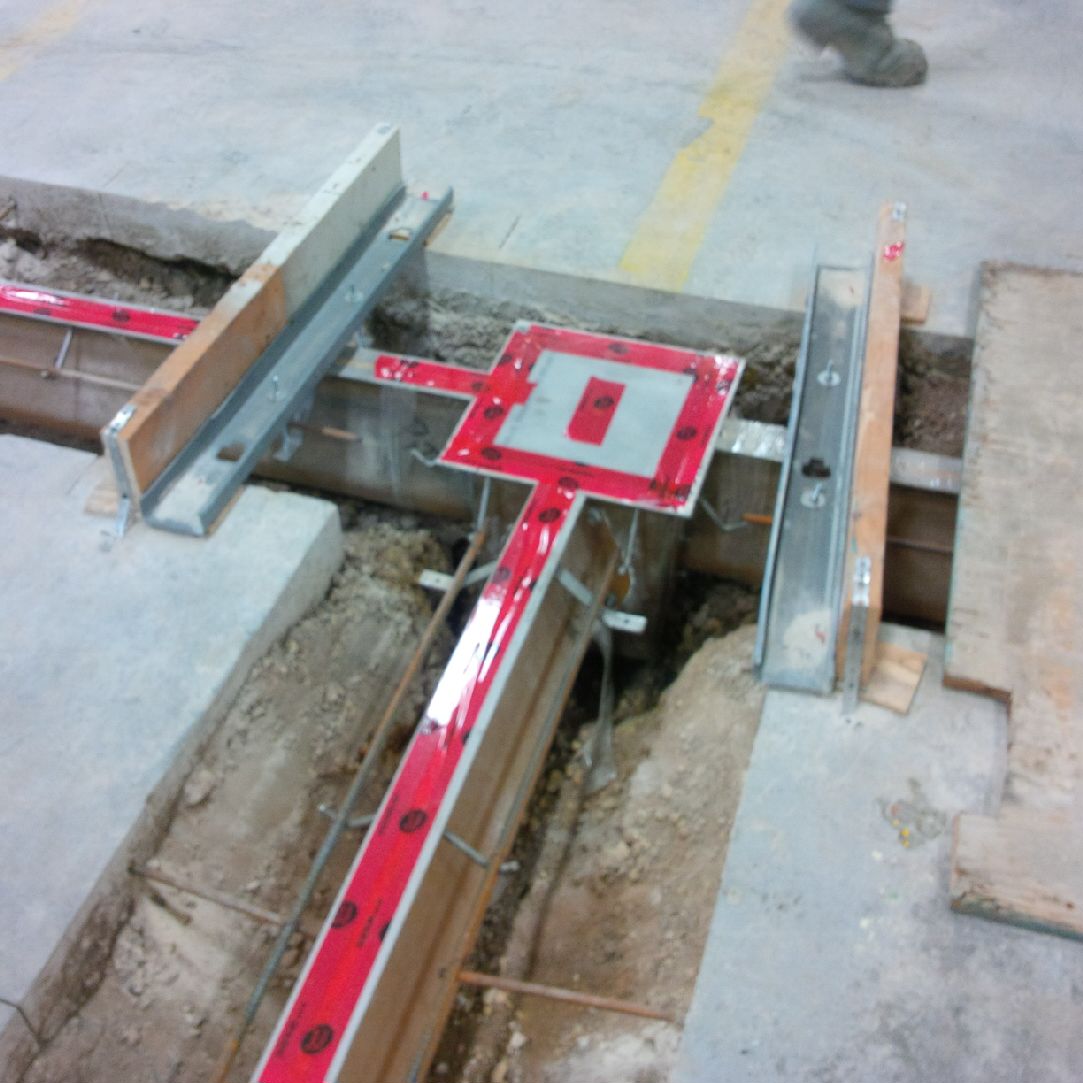If your project requires site drainage, you'll want to take the time to plan and specify a drainage system and ensure it meets all your requirements.
Some projects are best suited for catch basin or point drainage, but many industrial projects require a trench drain system. On average a modular trench drain system costs 11 percent less to install and maintain than using point drains. With no grates involved, a Slot Drain System saves even more.
We can help you specify a Slot Drain system and ensure a well-functioning drainage system that will last for years to come.

Step 1: Understand Hydraulic Performance
To begin, you'll need to understand the hydraulic performance of the drain along with the drainage requirements of your site. Slot Drain has the ability to handle high capacity drainage and has proven itself successful in hundreds of installations.
How much liquid can a Slot Drain handle? Slot Drain’s flow rates vary depending on the width of the slot. A standard piece of drain section with a slot width of 1 1/4” has a flow rate of 33 GPM (gallons per minute) or .074 cfs (cubic feet per second) for 100" of drain.
Step 2: Determine Traffic Loadings
What kind of traffic will travel over your drain? Is it in a high traffic area? To determine traffic loadings, consider vehicle weight, the type and size of the vehicle's tires, the traffic frequency, and the traffic's speed. The more movement and the faster the traffic, the greater the dynamic load your drain will need to handle.
Current DIN/EN Load Classifications for trench drains include:
- A: up to 3,372 pounds, for residential and light pedestrian traffic;
- B: up to 28,100 pounds, for sidewalks and small private parking lots;
- C: up to 56,200 pounds, for parking lots and general commercial use;
- D: up to 89,920 pounds, for trafficked sections of roads and highways;
- E: up to 134,800 pounds, for industrial areas, gas stations, and light commercial forklifts; and
- F: up to 202,320 pounds, for aircraft pavements, docks, heavy fork trucks, and other similar wheel loads.
Slot Drains are well-suited for high-traffic areas because they do not have grates. This design means Slot Drain can easily handle weight that you'd have to pay double and sometimes triple for equivalent load-rated grated drains. Our 9000 Series Drainage System is rated Load Class F and can handle repeated, heavy loads throughout their lifespan.
Step 3: Plan Long-Term Durability
Think about what your trench drain needs to handle over the years: climate (freeze/thaw cycles), strength, chemical resistance, UV stability, and fire resistance. In addition, consider the pavement finish that surrounds and protects the system.
Once you have a handle on the long-term requirements of your system, you can choose the material that best meets your needs. Slot Drains are available in galvanized steel and stainless steel.
Step 4: Consider User Requirements
With other trench drain systems require you to make a lot of decisions about grates, this is not a concern with Slot Drains. All Slot Drain series blend seamlessly into their surroundings, removing aesthetic concerns. Slot Drains do not have grates that need to be secured or cleaned. If your site requires ADA compliance, choose the 1/2" slot opening.
Step 5: Installation
Even if steps one through four are correctly specified, the drain system must be installed correctly in order to function properly. Before you begin, refer to the installation specifications.
As you begin to plan for installation, we are here to help. We provide up-to-date Slot Drain specification sheets for the use of architectural and engineering specifying, including submittals, spec sheets, CAD drawings, downloadable Revit files, product guide and industrial application guide.
We have a dedicated team of drainage experts available to provide suggested layouts as well as specification guidelines for tender purposes. Shop drawings are available upon receipt of purchase orders.



